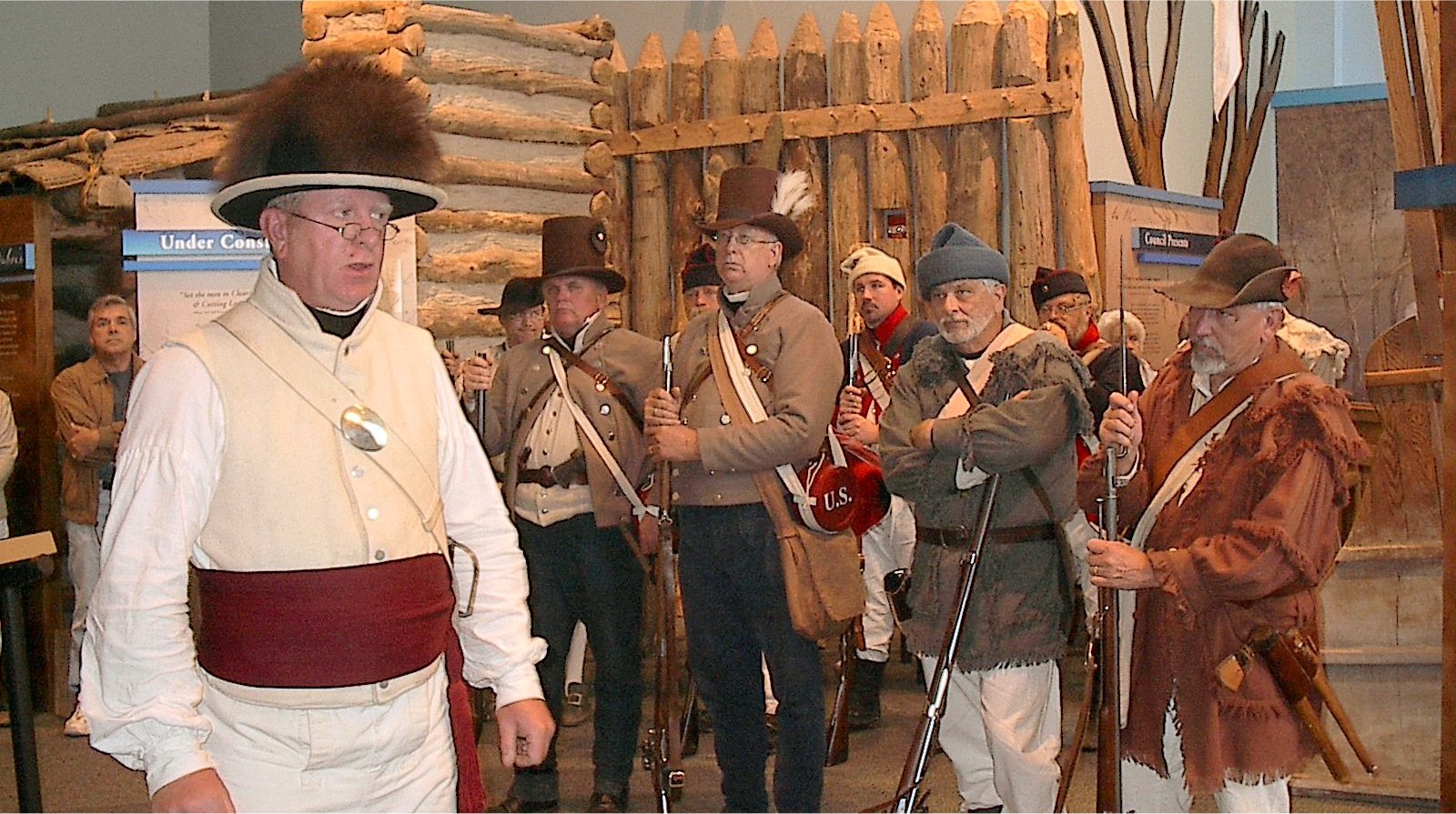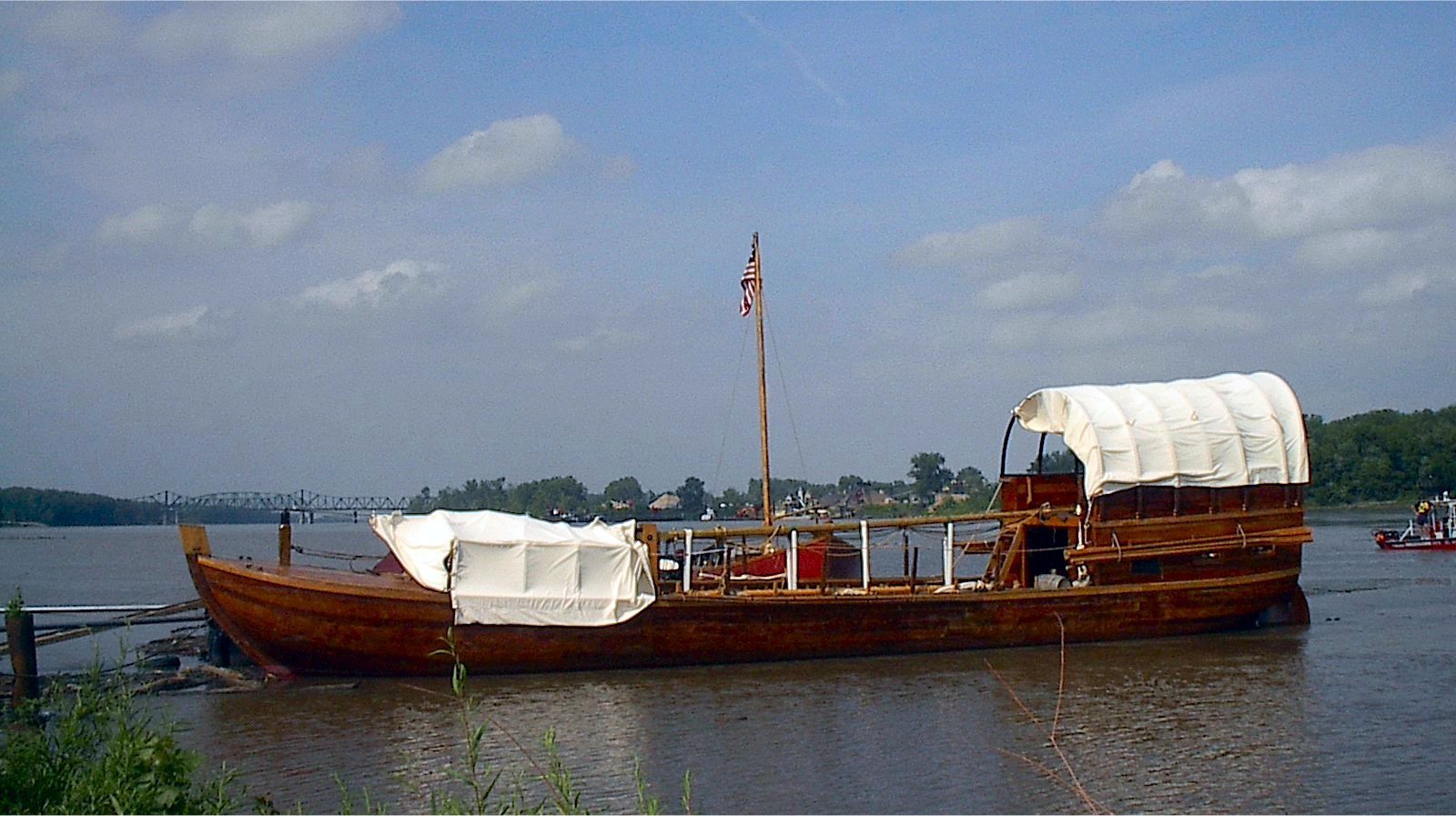In his letter to William Clark offering him co-command of the expedition, Meriwether Lewis wrote that he had been "instructed to select from any corps in the army a number of noncommissioned officers and privates not exceeding 12, who may be disposed to voluntarily enter this service . . ." Lewis also told Clark that he had been authorized to enlist civilian woodsmen.
Clark then set out to recruit men near his home in Clarksville, Indiana Territory, who met the qualifications set out by Lewis. These qualifications required the men to be "good hunters, stout, healthy, unmarried, accustomed to the woods and capable of bearing bodily fatigue to a considerable degree." On August 21, 1803, Clark wrote to Lewis that the men he had engaged were "the best woodsmen and hunters of the young men in this part of the country."
While Clark was recruiting, Lewis was delayed in Pittsburgh because the men he had hired to build the keelboat were drunkards who took advantage of the fact that it was too late in the year for Lewis to hire someone else. The crew that was to take the keelboat down the Ohio River to the Mississippi River was comprised mainly of soldiers being transferred to western forts. While in Pittsburgh purchased Seaman, the Newfoundland dog that accompanied the expedition.
Lewis departed Pittsburgh on August 31 with the keelboat and two flat bottomed pirogues that were added to carry some of the freight because the river was low. At Maysville, KY Lewis recruited George Shannon and John Colter. Arriving at Clarksville near the Falls of the Ohio Lewis joined up with Clark and his black "manservant" York, who were waiting with the seven young Kentuckians Clark had selected. These men were John Shields, George Gibson, Charles Floyd, Nathaniel Pryor, William Bratton, and the brothers Reuben and Joseph Fields. With Shannon and Colter, this group has become known as the "nine young men from Kentucky" and formed the nucleus of the Corps of Discovery.
The Corps of Discovery reached Fort Massac at the location of present day Paducah, Kentucky, on November 11. Secretary of War Henry Dearborn had instructed three western army units that Lewis had the authority to recruit volunteers from these garrisons and at Fort Massac Lewis and Clark chose Joseph Whitehouse and John Newman from Captain Daniel Bissell's company. Bissell also recommended to Lewis a civilian interpreter at the fort, George Drouillard, who Lewis temporarily hired and sent to collect a squad of recruits from South West Point in Tennessee.
After leaving Fort Massac the Corps floated down to the mouth of the Ohio River and began the upstream journey on the Mississippi River. The enormous physical effort required to take the three boats up the Mississippi probably convinced Lewis and Clark that they were going to need more manpower to be successful on the more daunting Missouri River. The expedition reached the fort at Kaskaskia, Illinois, on November 28, and during their stay Lewis and Clark recruited Sgt. John Ordway and privates John Dame, John Robertson, Ebenezer Tuttle, Isaac White, Alexander Willard, Patrick Gass, John Boley, Peter Weiser, John Collins and Richard Windsor.
Kaskaskia is sixty miles south of St. Louis and Lewis had extensive business to conduct at this fur trading post. While Lewis journeyed to St. Louis on horseback, Clark took charge of the boat crews. Lewis rejoined the expedition on December 9 at Cahokia, a village on the Illinois side of the Mississippi opposite St. Louis and told Clark of a tract of land suitable for the Corps' winter quarters on the Wood River, several miles north of Cahokia. This site had the advantage of being directly across the from the mouth of the Missouri River.
On December 12, 1803, Clark reached the mouth of the Wood River and the men began to clear the land and cut logs for the construction of the winter quarters they would name Camp River DuBois. On December 22, Drouillard arrived from Tennessee with eight men, four of whom were accepted and enrolled in the Corps of Discovery. They were Corporal Richard Warfington and privates Thomas Howard, Hugh Hall, and John Potts. By the end of January the names of several more men of uncertain origin began to appear on Corps rosters. They were privates Robert Frazer, Silas Goodrich, Hugh McNeal, Moses Reed, John Thompson, and William Werner. On Christmas Day George Drouillard agreed to join the expedition permanently as an interpreter for $25 a month, five times a private's salary.







